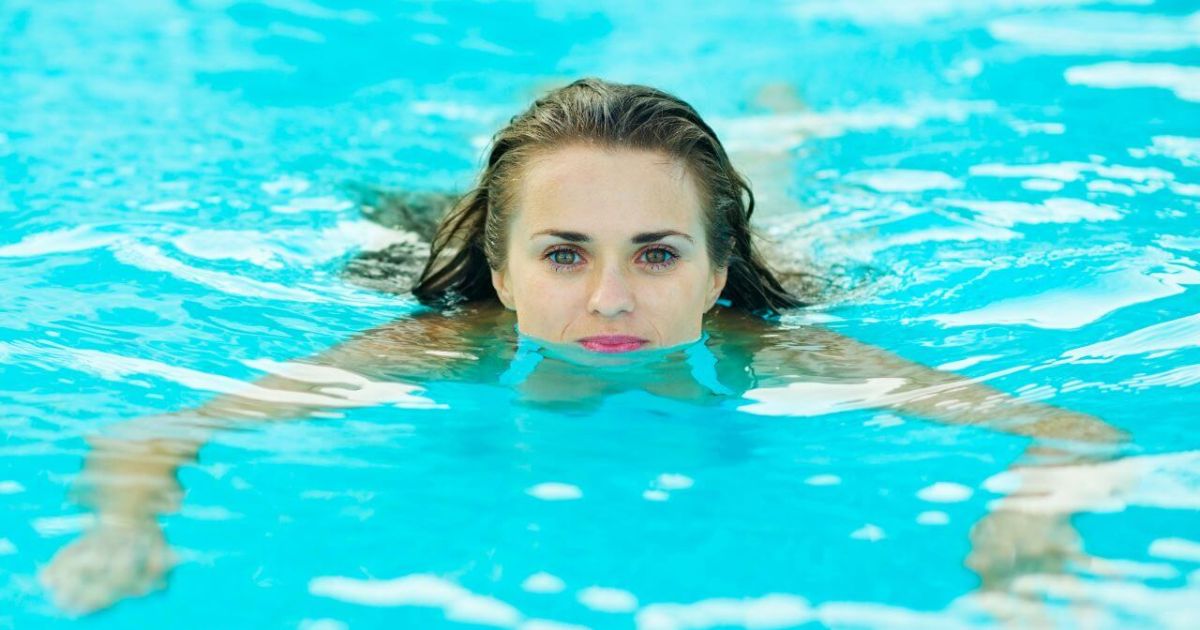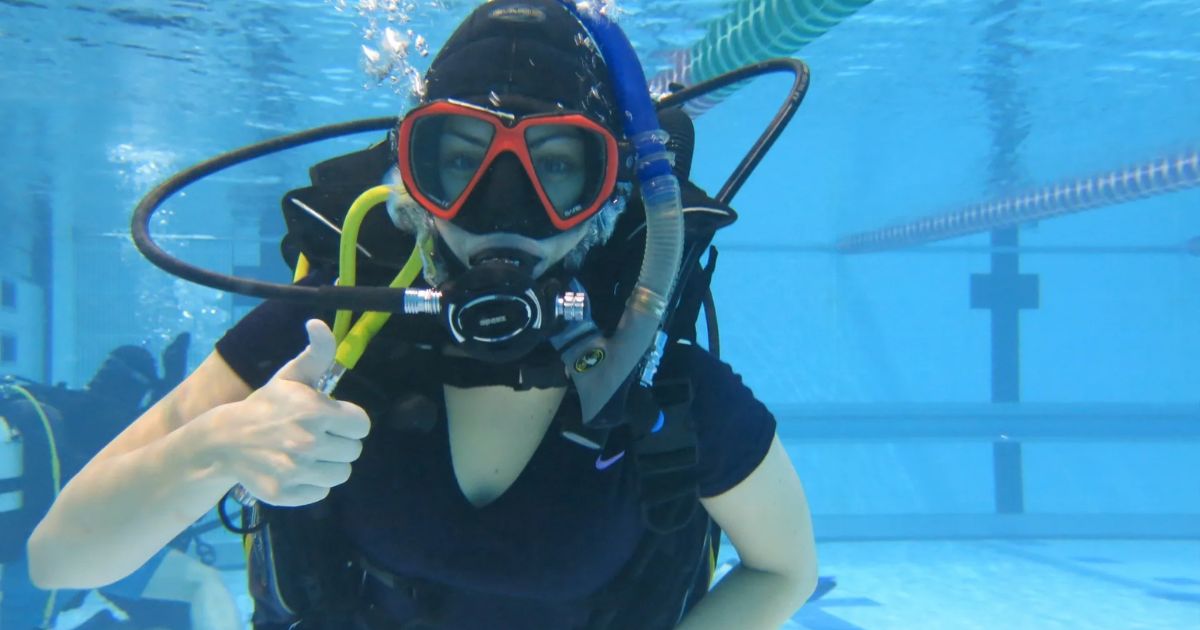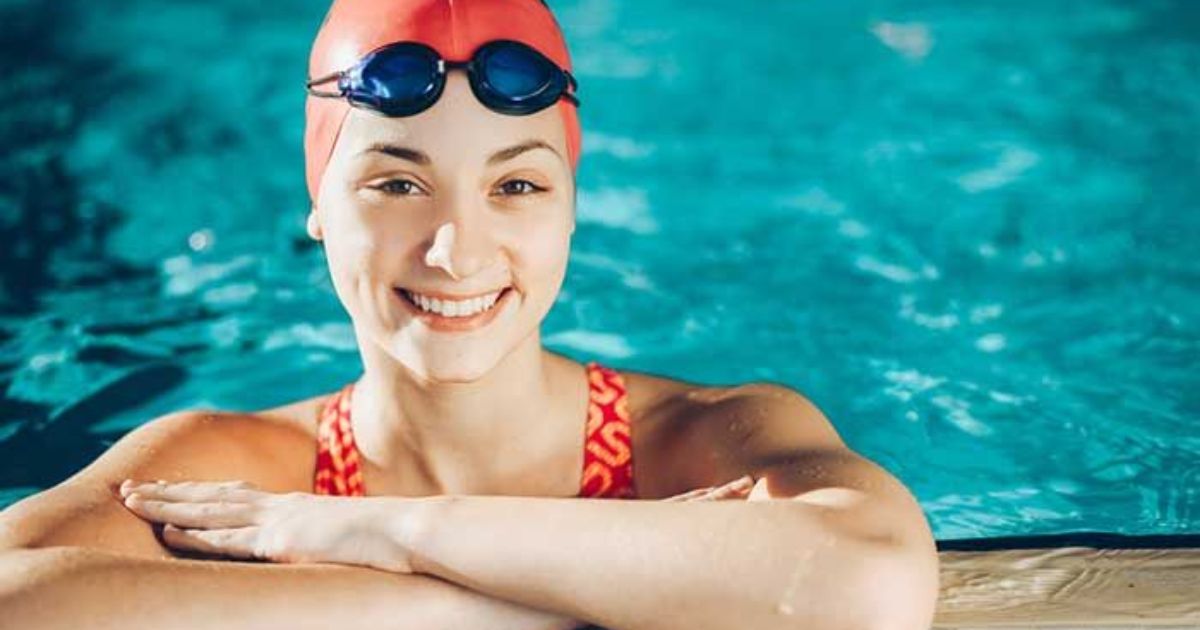Swim in chlorine after coloring your hair can fade the color due to the chemicals in the pool, so it’s advisable to protect your hair with a swim cap or rinse it thoroughly after swimming to maintain a vibrant color.
Dive into a world of vibrant hues, but beware of the aftermath! Picture this: you’ve just treated your locks to a stunning burst of color, only to find yourself facing the chlorine dilemma at the pool. It’s a colorful conundrum! Before you take that refreshing plunge, let’s unravel the tale of what happens when your freshly colored tresses meet the chlorine waters.
Swimming in chlorinated water right after coloring your hair is not recommended. Chlorine, commonly found in pool water, can strip away the hair’s natural oils and moisture, making colored hair more prone to fading and dryness. It is advisable to wait at least a few days after coloring before swimming to allow the hair cuticles to seal and protect the newly applied color.
How Soon Can I Swim After Coloring My Hair?
After coloring your hair, it’s best to wait a bit before jumping into the pool. Hair dye needs time to set and fully adhere to your hair strands. Ideally, wait at least 48 hours before swimming to avoid the risk of the color fading or bleeding.
This waiting period allows the hair cuticles to close and the color to stabilize. Chlorine and other chemicals in swimming pools can be harsh on freshly colored hair, potentially affecting the vibrancy and longevity of your new hue. So, be patient and protect your beautifully colored locks by giving them a couple of days before taking the plunge into the pool.
Salt Water Affect Dyed Hair
Exposure to saltwater can have a noticeable impact on dyed hair. The salt in seawater can strip away the natural oils from the hair, making it more porous and prone to color fading. Salt can contribute to dryness, causing the hair shaft to become brittle. This combination of factors may lead to a faster fading of hair dye and a duller appearance.
To protect dyed hair while enjoying the beach or pool, consider using a leave-in conditioner or wearing a swim cap to create a barrier against the salt water. It’s also advisable to rinse your hair with fresh water after swimming to minimize the effects of salt and help preserve your vibrant hair color.
The Role of Chlorine in Pool Hygiene and Hair Color
| Aspect | Chlorine in Pool | Hair Color |
| Sanitization | Kills bacteria and germs | No direct impact |
| Water Quality | Maintains clean and clear water | No direct impact |
| Hair Color Fading | May contribute to color fading | Can accelerate fading |
| Protection Measures | Shower before swimming | Use hair protection (e.g., swim cap) |
| Aftercare | Rinse hair thoroughly after swimming | Use color-safe shampoos |
Chlorine’s c and Health
Chlorine plays a crucial role in maintaining our health and well-being. It is commonly used to disinfect water, ensuring that harmful bacteria and parasites are eliminated, making the water safe for consumption.
Chlorine is often employed in the sanitation of swimming pools to prevent the spread of waterborne illnesses. While chlorine is beneficial for purifying water, it’s important to use it in appropriate amounts, as excessive exposure may have adverse effects on health.
Tips for Pre-Swim Protection
Shower Before Diving In: Take a quick shower before swimming to rinse off oils, sweat, and cosmetics. This helps maintain water quality and reduces the likelihood of skin irritation.
Apply Waterproof Sunscreen: Protect your skin from harmful UV rays by applying a waterproof sunscreen before hitting the pool. Choose a broad-spectrum sunscreen with at least SPF 30 and reapply as needed, especially if you spend an extended time in the water.
Wear Swim Goggles: Shield your eyes from chlorine and other pool chemicals by wearing swim goggles. They not only provide clear vision underwater but also prevent eye irritation caused by exposure to pool water.
Stay Hydrated: Don’t forget to stay hydrated before and after swimming. Dehydration can occur, even in the water, so drink enough fluids to keep your body well-hydrated, especially on hot days or during vigorous swimming sessions.
Wait to Swim After Semi-Permanent Hair Dye
After applying semi-permanent hair dye, it’s advisable to wait at least 24 to 48 hours before swimming. This allows the dye to fully set and penetrate the hair shaft. Chlorine and salt water can potentially strip away the color or cause it to fade more quickly if the dye hasn’t had enough time to properly adhere to the hair.
To maintain the vibrancy of your newly colored hair, it’s a good idea to wait patiently before taking a dip in the pool or ocean. Using a swim cap can provide an extra layer of protection for your hair when swimming in chemically treated water.
Swim After Dyeing Your Hair Black
After dyeing your hair black, it’s important to wait before taking a dip in the pool. The chemicals in hair dye need some time to set and fully adhere to your hair. Swimming immediately after the coloring process can lead to color fading or even staining of pool water. It’s generally recommended to wait at least 48 hours before hitting the pool.
During this time, it’s best to avoid washing your hair too frequently as well, to allow the color to settle in. Once the waiting period is over, you can enjoy the water without worrying about compromising your newly dyed black hair. Just remember to use a color-protecting shampoo and conditioner to maintain the vibrancy of your black hair for a longer period.
Swim After Dyeing Your Hair Blonde
After dyeing your hair blonde, it’s important to take some precautions before diving into the pool. The chlorine in swimming pools can affect the color and condition of your newly blonde locks. To keep your hair looking vibrant, consider wetting your hair with clean water before swimming and applying a leave-in conditioner to create a protective barrier.
Wearing a swim cap can further shield your hair from the chlorine. After your swim, rinse your hair thoroughly with fresh water to remove any chemicals. By taking these simple steps, you can enjoy the pool without compromising the beauty of your blonde hair.
Swim After Dyeing Your Hair Red
Dyeing your hair red, it’s important to take a few precautions before jumping into the pool. Red hair dye tends to be more susceptible to fading, so it’s advisable to wait at least a couple of days before swimming. This allows the color to set and reduces the risk of it bleeding into the pool water. When you do decide to take a dip, make sure to rinse your hair thoroughly with plain water before entering the pool.
This helps remove any excess dye that may still be on the surface of your hair. Wearing a swim cap to protect your newly colored locks from the chlorine in the pool, which can contribute to color fading. By taking these simple steps, you can enjoy a refreshing swim without compromising the vibrancy of your red hair.
Swim After Dyeing Your Hair Brown
After dyeing your hair brown, it’s a good idea to wait a day or two before hitting the swimming pool. The chemicals in hair dye need some time to set and fully bond with your hair. Jumping into chlorinated or saltwater too soon can strip away the color and leave your newly brown locks looking less vibrant. So, take a brief break from swimming and let your hair soak in the new hue.
Effects of Chlorine on your hair
Wet Your Hair First: Before jumping into a chlorinated pool, wet your hair thoroughly with non-chlorinated water. This helps create a barrier, reducing the absorption of chlorine by your hair.
Use a Swim Cap: Wearing a swim cap is an effective way to shield your hair from direct contact with chlorine. It forms a protective layer, minimizing the exposure of your hair to the potentially drying effects of chlorine.
Rinse After Swimming: After swimming, promptly rinse your hair with fresh water. This helps remove any lingering chlorine from your hair and prevents it from continuing to interact with your strands, reducing the risk of dryness and damage.
Apply Conditioner: To counteract the potential drying effects of chlorine, use a good-quality conditioner. This helps restore moisture to your hair, keeping it hydrated and minimizing the impact of chlorine exposure on its overall health and appearance.
Maintain Your Hair Color While Swimming
If you love to swim but worry about your hair color fading, here are some simple tips to maintain that vibrant hue. Before diving in, wet your hair with clean water to create a barrier that minimizes the absorption of chlorinated or salty pool water. Consider wearing a swim cap for extra protection.
After swimming, rinse your hair immediately with fresh water to remove any chemicals. Use a sulfate-free shampoo and conditioner designed for color-treated hair to keep your locks healthy and your color intact. Limit sun exposure, as UV rays can contribute to color fading. With these easy steps, you can enjoy your time in the pool without compromising your beautiful hair color.
Post-Swim Care for Colored Hair
After a refreshing swim, taking care of colored hair becomes crucial to maintain its vibrancy and health. The chlorine and salt in the pool or ocean water can strip away the color and leave hair dry. To protect your colored locks, start by rinsing your hair immediately after swimming to remove any lingering chemicals.
Use a sulfate-free shampoo and a nourishing conditioner specifically designed for colored hair. Consider applying a leave-in conditioner or hair mask to restore moisture and prevent damage. Avoid excessive sun exposure, and if possible, wear a swim cap to shield your hair from harmful UV rays and chemicals. With a little post-swim care, you can keep your colored hair looking vibrant and beautiful all summer long.
Conclusion
It’s advisable to exercise caution when considering a dip in chlorinated water after coloring your hair. While chlorine itself may not directly strip color, the chemicals in pool water can interact with hair dyes, potentially causing fading or alteration of the color.
To minimize any adverse effects, it’s recommended to wait a few days after coloring before swimming and to protect your hair with a swim cap or by thoroughly wetting it with fresh water before entering the pool.














